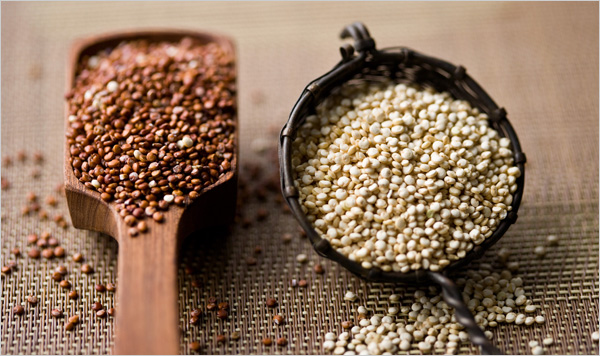Irish Potato Famine
Nature or human made disaster?
Here is a modern example of a crop boom that is leaving out the citizens who grow it.(from Federal Reserve Bank - www.frbsf.org/education)
Quinoa Boom
A resource via the Council for Economic Education (CEE) Quinoa is considered by many to be a “super food,” so nutritious that 2013 has been designated Quinoa Year by the U.N. 90% of the world’s supply comes from three countries: Bolivia, Peru, and Ecuador. This high protein, low-fat food has become so wildly popular world-wide that the price has increased by 600% since the year 2000. Like many food phenomenons, quinoa started at the subsistence level millennia ago as a staple of ancient Incan people. But the intense level of demand has now created two dilemmas: the citizens can’t afford their own crop anymore and though the nations who grow it have seen a surge in economic growth, there has been a decline in economic development. This is an indicator of elements such as education and healthcare.
Quinoa is considered by many to be a “super food,” so nutritious that 2013 has been designated Quinoa Year by the U.N. 90% of the world’s supply comes from three countries: Bolivia, Peru, and Ecuador. This high protein, low-fat food has become so wildly popular world-wide that the price has increased by 600% since the year 2000. Like many food phenomenons, quinoa started at the subsistence level millennia ago as a staple of ancient Incan people. But the intense level of demand has now created two dilemmas: the citizens can’t afford their own crop anymore and though the nations who grow it have seen a surge in economic growth, there has been a decline in economic development. This is an indicator of elements such as education and healthcare.Have your students read these two articles and answer the following questions:
- Using market analysis (supply and demand), describe the changes in the quinoa market since 2000.
- Why can it be said that "economic development is not a necessary condition for economic growth to occur?”
- Why is it suspected that economic development has declined in these Andean countries?
- Are there other examples of staple crops becoming mass-produced, and is it always a negative thing for the country of origin? Explain.

No comments:
Post a Comment